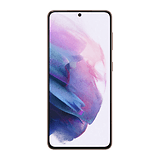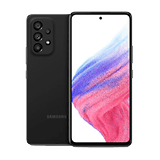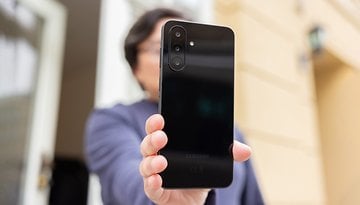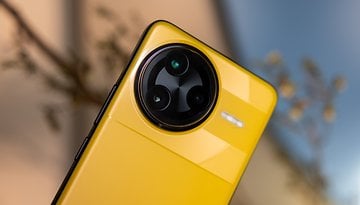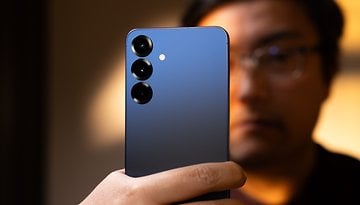Samsung Galaxy S21 review: The best 'small' flagship of 2021?


We have already reviewed a couple of Galaxy S21 smartphones here on NextPit, but the vanilla Galaxy S21 recently arrived in our editorial office several weeks after its release. We no longer want to withhold our review from you. Is your current smartphone too big for your hands? Well, the standard Galaxy S21 model could be your next best friend!
Good
- Comparatively compact form factor
- Fast performer even when compared to Plus & Ultra models
- Plastic back looks surprisingly good
- Extended software support
Bad
- Poor battery life
- No S-Pen support
- No UWB chip
- No expandable memory
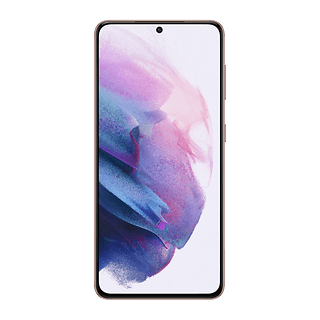
Brief Summary
Samsung's Galaxy S21 shines in this review simply because it works as intended, fitting the niche that it has so comfortably nestled itself in with each new Galaxy S range. With a recommended retail price of €849, it boasts fantastic build quality, delivers flagship performance, and is more than capable of doing just about everything that a smartphone can do in 2021.
The plastic back (polycarbonate, actually), there is more than enough value on its own to make it capable to carry its own torch, even when compared to the Plus and Ultra models. One major glitch with the Galaxy S21 is this: the incredibly poor battery life, a missing ultra-wideband chip, and no micro SD memory card slot for expansion purposes.
Who does the Samsung Galaxy S21 target?
With a recommended retail price of €849, Samsung has set its sights on the higher-end smartphone range with the Galaxy S21. Powered by its modern 5G Exynos 2100 SoC, WiFi 6, a powerful triple camera combination, and a brilliant AMOLED display with a 120 Hz refresh rate, in addition to the rest of the hardware specifications.
Some of the more unique features for a smartphone that falls in this price range would be the relatively small form factor, a 6.2-inch display, and guaranteed security updates over a period of four years. With all of the above and a powerful processor in tow, this is a future-proof handset. It is only the 4,000 mAh battery that will be a problem over the long term, as it does not offer fantastic battery life, to begin with and will certainly see battery performance deteriorate further in due time. More about its battery life further down!
This is where the Galaxy S21 shines
Performance and technology
Samsung uses its latest Exynos 2100 SoC in the Galaxy S21 which is mated to 8 GB of RAM. For everyday use, this hardware configuration is more than capable of delivering a similar performance level as in the more expensive Plus model. Only the Galaxy S21 Ultra comes with either 12 GB or 16 GB of RAM, but in terms of processor performance, there is no difference.
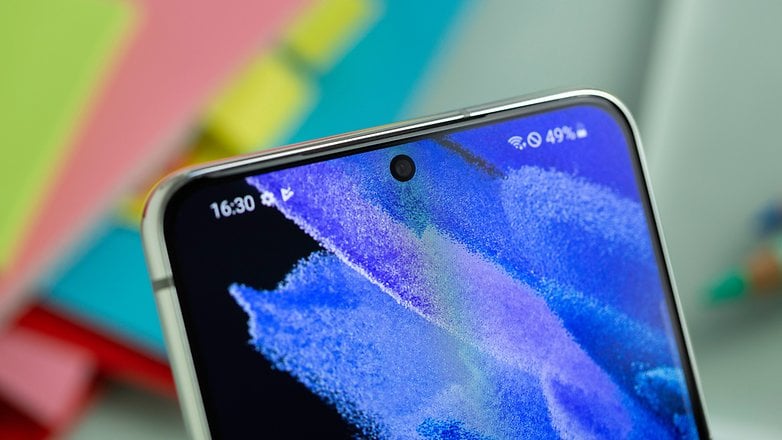
Thus, the smaller Galaxy S21 is a real powerhouse and easily equipped for multi-tasking without a hitch. It simply works well courtesy of Samsung's One UI, working both in split-screen mode and as an Android skin, the very capable camera performance, and display that works flawlessly when it comes to modern mobile games. Titles such as Call of Duty: Mobile and PUBG ran smoothly in the review, where you can safely push the graphics settings to the highest resolution and the highest quality level.
The Exynos S2100 SoC also has an integrated 5G modem, is compatible with Wi-Fi 6, in addition to other features such as NFC and Bluetooth 5.0 connectivity. There is also an under-display fingerprint sensor that is sensitive enough to register your prints quickly. All of the above have been put together very well.
Display
Not only is the Galaxy S21's 6.2-inch Dynamic AMOLED display bright and brilliant to look at, and it also offers a 120 Hertz refresh rate. I am pleased to note that the refresh rate is adaptive in nature, automatically slowing down in certain situations to conserve battery life. As the resolution stands at FHD+ (or 2,400 x 1,080 pixels) just like the Plus model, the pixel density is actually slightly higher due to the smaller display. Your eyes will definitely appreciate the crisp 421 ppi screen.
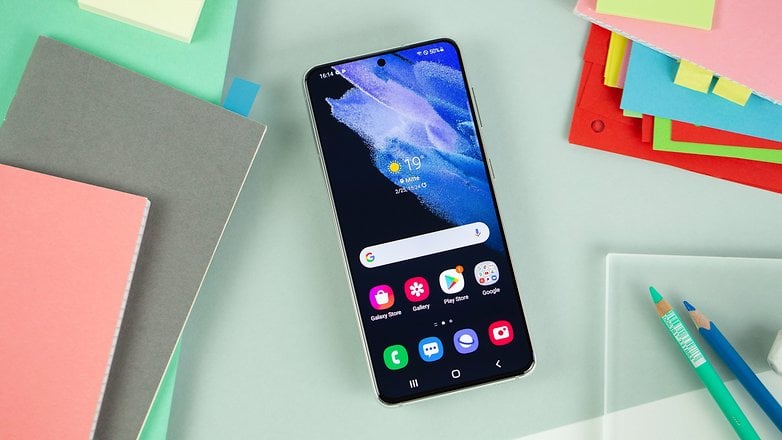
With a display size of 6.2-inches, Samsung has found a good middle ground between usability with one hand and being of sufficient size for multimedia applications. Samsung's Infinity-O display - the AMOLED panel with a punch hole notch shines once again in 2021, offering a near borderless display. There are no rounded corners to worry about, with everything set in a compact and beautifully designed chassis.
Design & build quality
The Galaxy S21 measures 151.7 x 71.2 x 7.9 millimeters and is relatively compact compared to other flagship models. This makes the Galaxy S21 more of a counterpart to the Google Pixel 5, which sports a 6-inch display. Tipping the scales at 169 grams, the Galaxy S21 is also light enough to tote around, where you would hardly notice it when it is in your pocket.
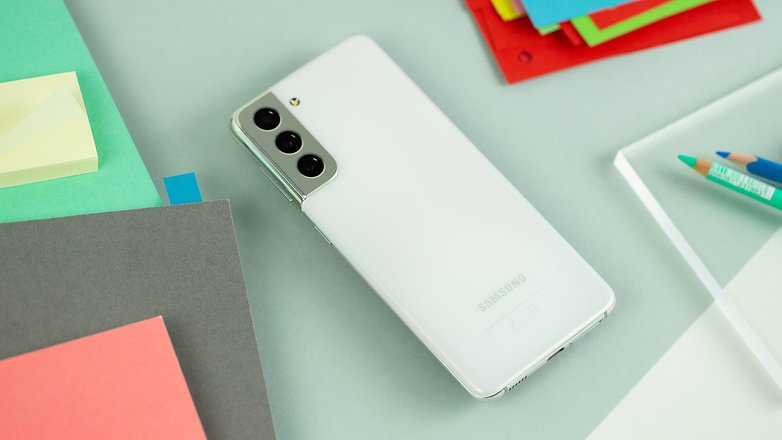
The lightweight form factor is partly attributed to the polycarbonate case at the back, which certainly won't please everyone who is looking for a high-end smartphone. Personally, it doesn't detract from the Galaxy S21's value. Rather, it makes the smartphone much easier to hold and doesn't attract fingerprints (at least for the white color variant). Samsung's polycarbonate back does have a high-quality feel to it, while the smartphone's interior is so densely arranged that there is nothing to worry about the feared hollow effect, which was strongly seen in the Xiaomi Redmi Note 9T.
Camera
I had already written half a dissertation about the Galaxy S21's camera. This is because Samsung uses the same camera system here as it does in the Galaxy S21 Plus, hence you end up with a 12-megapixel main camera, an ultra-wide-angle camera with the same resolution, and a telephoto camera at 64 megapixels and "hybrid" triple zoom. To read about the technical details, I'll refer you to our Galaxy S21+ review in terms of its camera performance. Needless to say, I've snapped a few sample photos using the Galaxy S21.
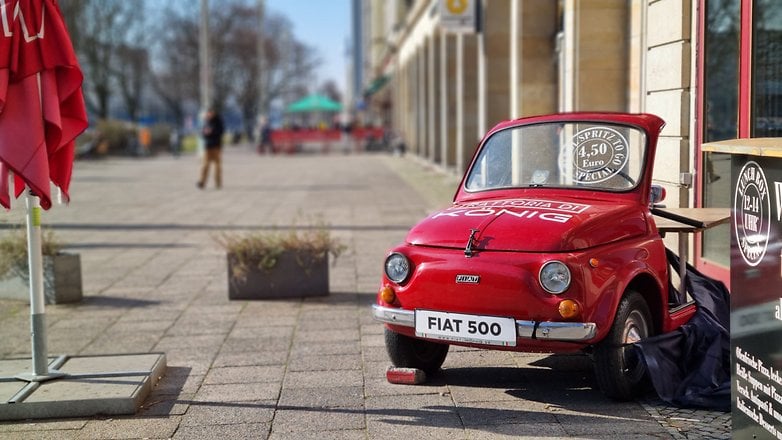




Once again, it is the rather deceptive manner in which Samsung markets the telephoto camera lens that annoys me the most. In reality, the optical focal length of the "telephoto camera" is only slightly larger than that of the main camera. This Samsung handset only achieves increased zoom levels via digital magnification. If Samsung had equipped the Galaxy S21 with a 64-megapixel main camera, you should also expect a similar quality when zooming. This is particularly annoying since the manufacturer could have at least transferred the 3x optical telephoto camera from the Ultra model.
The Galaxy S21 disappoints in this aspect
Lack of innovation and missing important flagship features
This is not a new issue as it was already brought to light when the Galaxy S21 series was first introduced. Instead of making a mark with new innovations in its latest flagship smartphone range, the improvements are marginal, with others being seen as a regression - especially with the vanilla Galaxy S21.
For example, the ultra-wideband sensor that is available in the Ultra model is missing here and we have already mentioned the telephoto lens. Even though I quite like the polycarbonate back, it's certainly cheaper to produce than the Gorilla Glass Victus glass used on the more expensive models. Compared to the Galaxy S21 Ultra, it also lacks WiFi 6E and Bluetooth 5.2 connectivtiy.
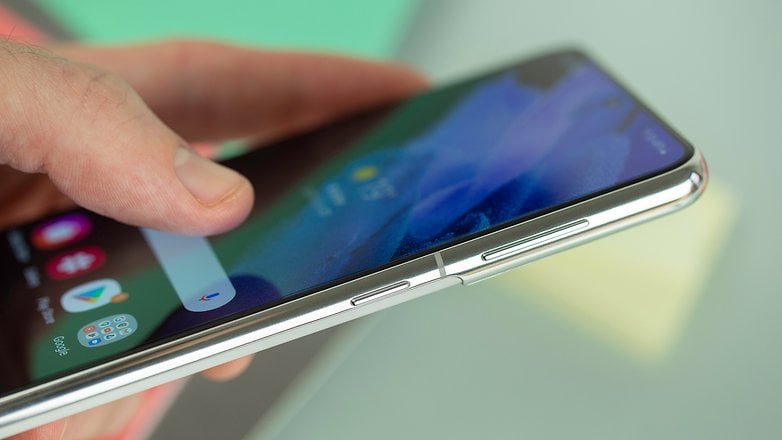
What is not listed on the hardware specifications sheet is Samsung's use of what seems to be an inferior vibration motor. After all, it was the Galaxy S21 Plus' haptic feedback that impressed me greatly. It brings back memories of Apple's Taptic engine in their iPhones, where such a tactile experience offers subtle yet a unique user experience. As I used both the higher-end Galaxy S21 Plus and Galaxy S21 Ultra handsets before this standard model, it was exactly this that I noticed something was amiss from the get go.
We will publish a detailed comparison article between all three Galaxy S21 models on NextPit soon. I'm currently working on it but wanted to review the Galaxy S21 first. Stay tuned!
Battery life
Probably the biggest gripe that I have with the Galaxy S21 is the battery life. I have a Google Chromecast in my living room with which I can control via my smartphone. This is not an issue, except that I constantly need to look for a USB-C charger in the living room to charge the Galaxy S21.
It has happened to me numerous times where the smartphone's battery dipped below the critical 10% mark at around 9pm. Interestingly enough, I am not even a "power user" who is glued to my smartphone all day long. I rarely play mobile games, and sometimes spend more time than I'd like on YouTube. I guess many owners of the Galaxy S21 tend to suffer from a level of nervousness by the time dusk falls, which is quite a shame.
This is because the capacity of the 4,000 mAh battery will degrade even further with prolonged use over the course of time. As commendable as it is that Samsung is providing the phone with four years of security updates, I hardly think that you'll last that long without going through a battery change. To write that about a €850 smartphone is rather disappointing, especially since even many mid-range models can last far longer.
There are some things that you can do to prevent your smartphone from running out of juice too early in the day - and one of them is to activate energy saving mode that will reduce selected background processes while throttling the processor performance, which I think is counterintuitive in the first place. After all, wouldn't you want a flagship device to use all of its features to the best of its ability rather than limit it? Another step would be to turn the display off and reduce the refresh rate to 60 Hertz. For you to limit a brand new smartphone in its features a week after purchase shouldn't be the case at all. Simply unacceptable, Samsung!
What else I noticed
What should you know before picking the Galaxy S21 up? Here are a few things I'd like to point out:
- The S21 has powerful dual speakers that are powerful enough even to enjoy your music in the shower
- ... and no, despite its IP68 certification, I didn't take the phone into the shower with me
- 25 watts quick charging is offered on the Galaxy S21, in addition to 15 watts wireless charging support
- A charger is not included in your purchase. You end up with just a USB-C to USB-C cable
- Dual SIM compatible with two SIM cards or one card + eSIM
Samsung Galaxy S21 technical specifications
Samsung Galaxy S21 specifications sheet
| Model | Galaxy S21 |
|---|---|
| Processor | Samsung Exynos 2100: 5nm 64-bit octa-core processor |
| Memory (RAM / internal) | 8GB / 128 GB 8GB / 256 GB |
| Expandable memory | No |
| Dual SIM | Yes (SIM1 + SIM2 or SIM1 + eSIM) |
| Display | 6.2-inch Dynamic AMOLED display with punch-hole notch / FHD+ (2,400 x 1,080 pixels) at up to 120 Hertz / maximum 1,300 nits / 421 ppi / no curved display |
| Size | 151.7 x 71.2 x 7.9 millimeters |
| Weight | approx. 169 grams |
| Connectivity | 5G, LTE, WLAN 802.11 a/b/g, Wi-Fi 6, Bluetooth 5.0, USB Type-C, NFC, GPS |
| Main camera | 12 megapixels on 1/1.76" at f/2.2 |
| Ultra-wide angle | 12 megapixels at 1/ 2.55" at f/2.2 |
| Telephoto | 3x with 64 megapixels on 1/1.72" at f/2.0 |
| Telephoto (2) | - |
| Front camera | 10 megapixel on 1 /3.24" at f/2.2 |
| Video | max. 8K video at 24 fps |
| Camera Features | 30x space zoom, 8K video snap, motion view, director's eye view |
| Battery capacity | 4,000 mAh |
| Charging Technologies | Fast charging at 25 watts, wireless charging at 15 watts |
| Authentication | Improved finger sensor under display, face recognition |
| Audio | Stereo speakers |
| Materials | Gorilla Glass Victus on the front, polycarbonate on the back |
| Operating System | Android 11 with Samsung UI 3.1 |
| Compatibility with S Pen | No |
| Charger included? | No |
| Price | €849 / €899 |
| Release | 29 January 2021 |
Final verdict
Personally, I like the idea of the Galaxy S21 most compared to its other models. It is nice to use a smaller smartphone once again, especially when it is on par in terms of performance compared to the Galaxy S21 Plus. This makes the Galaxy S21 one of the most powerful smartphones on the market without having to break the bank. The 120 Hertz refresh rate and its new technologies are something that you wouldn't want to do without, and I've also come to accept the high-quality polycarbonate back panel after just a couple of weeks with it.
However, Samsung does not really offer too many innovations in its latest flagship - a problem that I have already criticized about the Plus model. The biggest weakness that I see is the rather limited battery capacity of 4,000 mAh, which often sent me hunting for a charger at 9 pm in the evening. This makes the idea of having four years of updates less appealing because chances are, you will need to change the battery long before that happens. The camera setup is also a bit of a letdown, although it does capture rather nice pictures in bright daylight.
In short: The Galaxy S21 is a nice, but not one without its flaws. If you're not completely blown away by the design and form factor, there aren't too many reasons to upgrade from its predecessor. For everyone else, the Galaxy S21 is one of the most beautiful and technically advanced phones on the market, and you can even use it with one hand.
